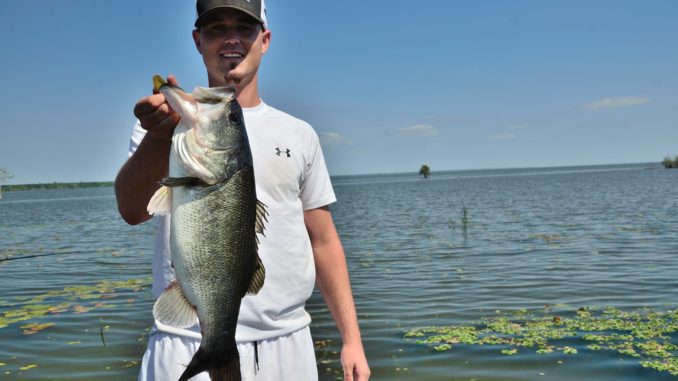
Play the wind correctly, find a creek where the herring are living, and grab hold of some great bass fishing.
The Albemarle Sound is one of the two largest estuaries in the North Carolina and is home to a world-renowned population of striped bass, which receive most of the attention given to the sound’s fishery.
But when the entire striped bass populations heads 125 miles upriver in the spring to spawn, that leaves the entire sound and its rich, fertile tributaries to a distant relative, the largemouth bass.
Like other North Carolina estuaries, the Albemarle Sound is chock full of bait and aquatic life. Its banks and the banks of its fertile tributaries are covered with trees, stumps, lilies and other kinds of aquatic cover that provides bass and their prey endless places to live.
Those kinds of places mean great spring fishing to guide Jeff Onley of Albemarle Fishing Charters.
“Largemouth bass start bedding early in the same general places that crappie do — in the canals and in the small tributaries that enter the sound,” said Onley, who lives in Elizabeth City. “The shallows of these creeks are loaded with large trees and cover that provide perfect conditions for their spring spawn.”
Onley prefers streams that flow south into the sound: Yeopim Creek, Little River and the Perquimans River. These tributaries are shallow and more vulnerable to the sun’s rays than the bigger, main rivers like the Chowan. As a result, the waters in these tributaries warm significantly faster than the main-river channel creating a perfect place to kickoff the spawn.
Bass require waters in the mid- to upper 60s to begin spawning and the small feeder tributaries are the first to reach those levels. In addition to an ideal water temperatures, these tributaries have sandy bottoms and plenty of structure that sets the stage for bass to feeling frisky when spring arrives.
Often, the biggest fish show up first to drop their genetic material. Scooter Lilley of CWW Inshore Fishing Charters is one angler who lips many of these king-sized, bucketmouths in small tributary waters.
“I catch a lot of fish that go on the beds in April, and usually my biggest fish of the year in these waters come from April,” he said. “Many of the bigger fish run up into the shallows of the smaller systems during the first spawning wave.”
The smaller tributaries and canals typically feature large areas of shallow water with plenty of woody structure. Lilley searches these tributaries for stumps and small sandbars in water depths ranging from 1 to 8 feet.
“Fish will spawn in very shallow water and as deep as 3 feet of water in the Albemarle,” says Lilley. “I look for big cypress trees and piers in the shallows.”
Lilley rarely spends too many days venturing up into unfamiliar waters.
“They will spawn in same places year after year. I usually can count on fish being in the same places during the spawn as they were last year,” he said.
Lilley typically flips heavy, sinking worms into the shallow bedding areas. But he’ll start using topwater baits, like a Devil’s Horse, the first chance he gets along the edge of spawning areas. He will follow up with soft-plastic creature baits if he misses a top water strike.
“They will usually hit the creature bait after missing the topwater,” said Lilley, whose soft-plastic color selection remains simple. “Green pumpkin with a chartreuse tail and junebug are two of the most effective colors anywhere you fish for bass in North Carolina.”
While the spawn pushes these big fish into the shallowest places in these tributaries, sometimes the best place to get on a hot bite in spring is in a little deeper area. Fishing creeks and spawning waters close to deep water is critical for Lilley.
“In April, the weather is unpredictable around here. Even though the weather may be perfect for two weeks solid, a cold front can pull the fish off the beds overnight and into the deep water,” he said.
Beyond an unusual weather event, bass will spawn at different times, and when they spawn., not every one will be sitting in 12 inches of water on top of eggs. Bass will frequently slide in and out of the bedding areas from deeper staging areas.
Lilley said that waves of April bass will often be in prespawn, spawining and post-spawn modes, so he always fishes the edge of deep water near spawning flats.
“Fish will stage in water from 3 to 5 feet deep or in water as deep as 8 feet when a major cold wave arrives,” said Lilley, who will slow-roll a spinnerbait with big, Colorado blades or fish a Bomber Fat-A crankbait along the upper edge of the deep break.
The moon phase will affect the timing of bass going to spawning areas. Peaks of spawning will be on the full and new moons, with the full moon having the greatest effect on bedding behavior.
Because male bass, aka bucks, create beds before the females arrive and help patrol the nest once the eggs are laid. With that in mind, beds can be good places to fish in all three phases of the spawn. At any time during April, plenty of buck bass will be in bedding areas, and the opportunity to stick a trophy fish will be around the full moon.
DESTINATION INFORMATION
HOW TO GET THERE — US 158 points all points west is the best way to access areas along the northern shoreline of Albemarle Sound where many bass fishermen wind up. Popular public boat-access areas are at Edenhouse Bridge on the Chowan River off US 17, Perquimans River Landing near New Hope, Hall’s Creek Landing at Little River and Bayside Marina on Pembroke Creek in Edenton. For a complete list of public-launch facilities, visit www.ncwildlife.org/Boating_Waterways/Boating_Maps_Locations.htm. The best fishing will be in smaller tributaries to the sound, including Salmon Creek, Rocky Hock Creek, Pembroke Creek, Bennett’s Creek, Perquimans River, Little River, Youpim River, Pasquotank River.
WHEN TO GO — In the Albemarle Sound and its northern tributaries, bass begin to spawn when the water temperature reaches 65 degrees, and they spawn won’t end until the mercury reaches the low to middle 70s. That points to great fishing action from late March through May. Action will pick up first in tributaries.
BEST TECHNIQUES — Medium-heavy to heavy action, 7- to 7 1/2-foot baitcasting outfits spooled with 20- to 40-pound braid are common. Lure choices cover the entire spectrum, from soft-plastics to topwaters, jerkbaits, spinnerbaits, lipless crankbaits and swim baits.
FISHING INFO/GUIDES — Scooter Lilley, CWW Inshore Charters, 252-799-9536, www.fishNcarolina.com; Jeff Onley, Albemarle Fishing charters, 252-264-4567, www.albemarlefishingcharters.com. Timmy’s Bait and Tackle, Hertford, 252-426-5837; Pembroke Creek Fishing Center, Edenton, 252-482-5343. See also Guides and Charters in Classifieds.
ACCOMMODATIONS — Hampton Inn, Edenton, 252-482-3500; Inner Banks of North Carolina, www.visitwashingtonnc.com; Hampton Inn-Edenton (252-482-3500); North Carolinas Division of Travel and Tourism, www.visitnc.com.
MAPS — GMCO’s Chartbook of North Carolina, www.gmcomaps.com; Navionics, www.navionics.com; N.C.’s Coastal Boating Guide, www.ncwildlife.org/Boating_Waterways/documents/NCCoastaBoatingGuideMap.pdf.

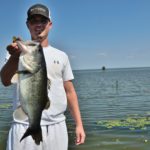
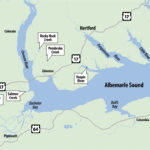
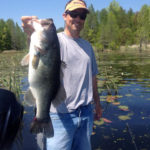
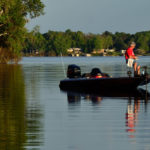



Be the first to comment